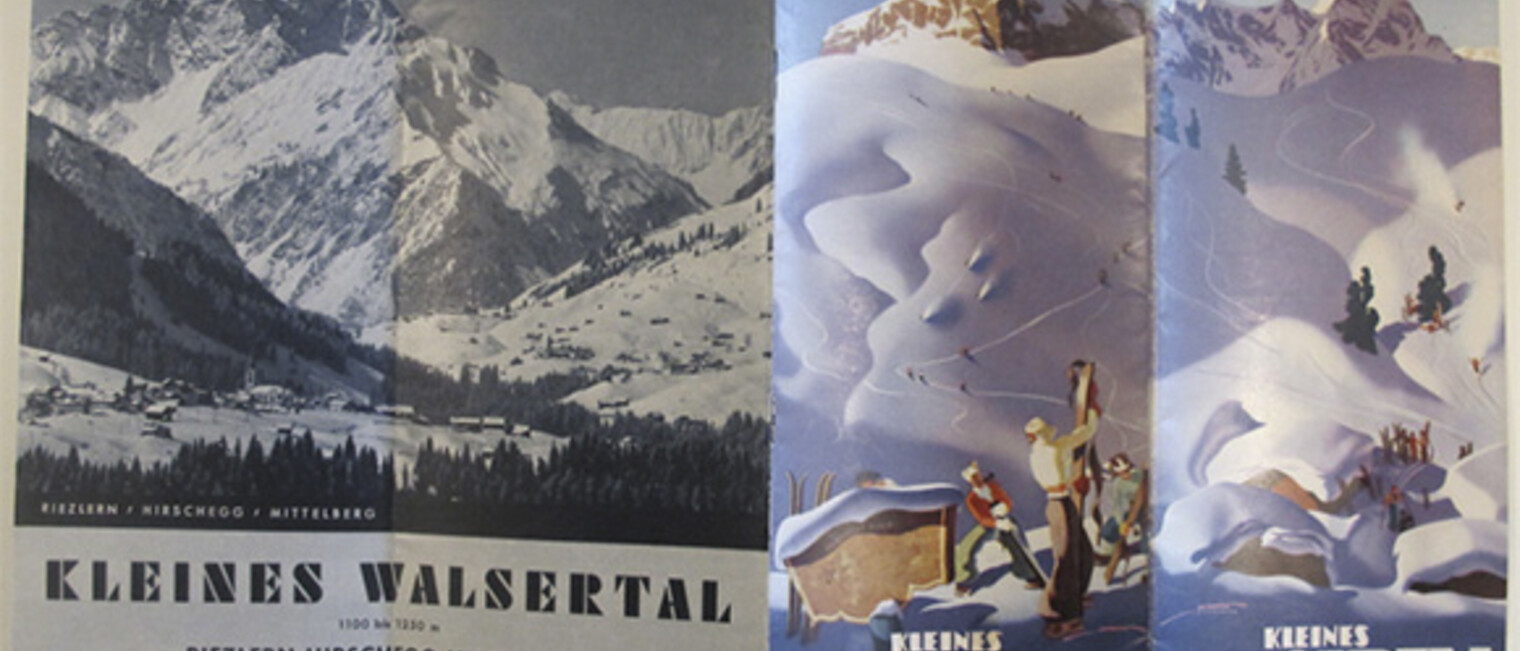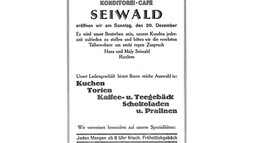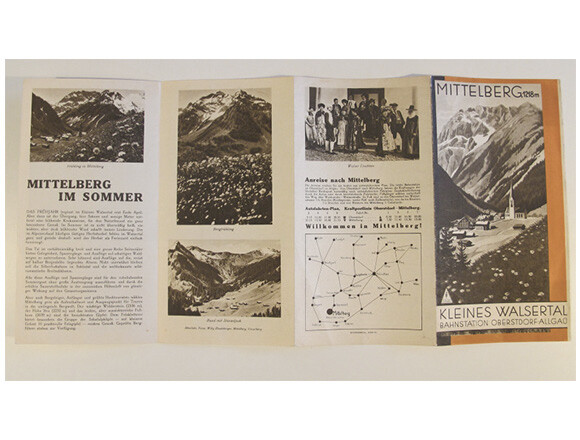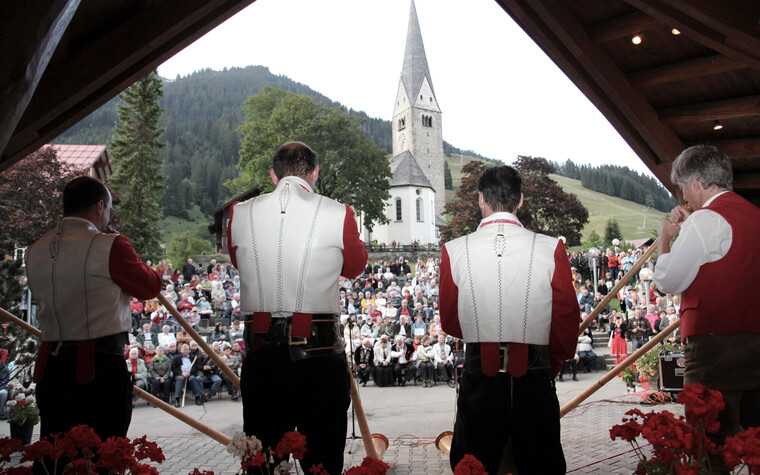

The coffee brewer of Riezlern
The café in Riezlern that is now called Café Amely opened shortly before the Second World War. The café’s own success story can be retold by tracing the development of tourism in Kleinwalsertal.
The café in Riezlern that is now called Café Amely opened shortly before the Second World War. The café’s own success story can be retold by tracing the development of tourism in Kleinwalsertal. Stefan Heim recounts how much more than just the aroma of coffee and baked goods drifted in the air in this establishment during the early years of its existence.
Hans and Amalie Seiwald were a married couple and hoteliers. They arrived in Kleinwalsertal from Garmisch in 1936 and they immediately built a house during the same year in Riezlern (now number 36 Walserstrasse). By the 20th December 1936, they had already opened the cake shop and the Café Seiwald. Café Seiwald was an extremely well-run business and was even regarded as ‘something of a sensation’. Frau Amely dedicated her heart and soul to the business and would always refer to herself as the Kaffeesiederin (the coffee shop owner).
Dancing & Cabaret After the War Years
In 1944, a part of Riezlern primary school was housed in the café because the schoolhouse was being used as a military hospital. The occupying French military forces chose the building to serve as the mess for non-commissioned officers from 1945.
In 1950, the building was extended to include the Mocca Stube bar and the business acquired the name Café Amely. As well as the celebrated cake shop, tea dances and evening dances were also held here. The café hosted an number of events, including a fashion show entitled Die Wahl der Blumenkönigin (the Queen of the Flowers’ Range) with Heinz Östergard, a cabaret called Die Stachelschweine (the porcupines) with Dieter Hildebrandt and appearances by Swiss actor and singer Vico Torriani.
The railway line that ran to Oberstdorf /Allgäu was opened in 1889 and offered holidaymakers an affordable way to reach the valley. Visitors would continue their journeys from Oberstdorf by foot or horse-drawn vehicles and in 1930 the omnibus service was started from Oberstdorf to Mittelberg.
Tourism developed rapidly in the 1920s. Large numbers of people would especially visit from Baden Württemberg. It is assumed that the valley became so well known in this area of Germany due to the Württembergische Snowshoe Company No. 1. This was located in the ski huts around the Melköde during the First World War to provide ski training courses. During this time, an influx of German citizens had already started to arrive who consequently also ended up playing a major role in the development of tourism in the valley.
The advertising placards from the 1930s also reveal some remarkable facts. Until 1938, each village, namely Mittelberg, Hirschegg and Riezlern, had its own tourist information office. These offices promoted their locations completely independently from each other. It was only when the National Socialists came to power in 1938 that advertising was carried out under one banner for the whole valley.
Just Like Mushrooms Springing out of the Ground
The following years saw a frenzy of building activity, including the construction of Café Seiwald as we can deduce from this police report written on the 27th January 1937:
‘From 1936 to the autumn of 1937, the Sportcafe-Fischer (Alpina), the Siegfried Walker Pharmacy building, the bank building, the Württemberg sports club and the fire station were built in Hirschegg. A further 13 private houses were built in Hirschegg. A fully equipped clinic run by Dr. Backer was built in the most modern style of the day in Riezlern during this time of rapid change. Approximately 100 new patients were registered at the clinic. The clinic is continually used by patients. In addition, two customs houses were built in Riezlern which were governed by what was then Imperial Germany (reichsdeutsch), followed by the Köberle carpenter’s workshop, the Lingenhöl installation building, the Café-Seywald, the Hotel-Walserschanz and a further 7 new private homes. In addition, in Mittelberg the Sporthotel-Dreher and in Baad, the Bruno Schuster carpenter’s workshop, 3 reichsdeutsch (imperial German) customs houses and 12 private homes were built. The commercial businesses in the valley were almost completely rebuilt and expanded. Many private homes were also redeveloped and equipped to accommodate tourism
Stefan Heim is the Director of Walser Museum and chronicler of life in the municipality of Mittelberg. Along with other interested parties, he is currently coordinating and developing a new concept for the Walser Museum.
To find out more about the changes that are being made to the museum, please refer here to the article BAUSTELLE: Museum and the Museum: Please click here to go to the article GUCKLOCH (looking through the peephole).





















Share page...
...and tell others